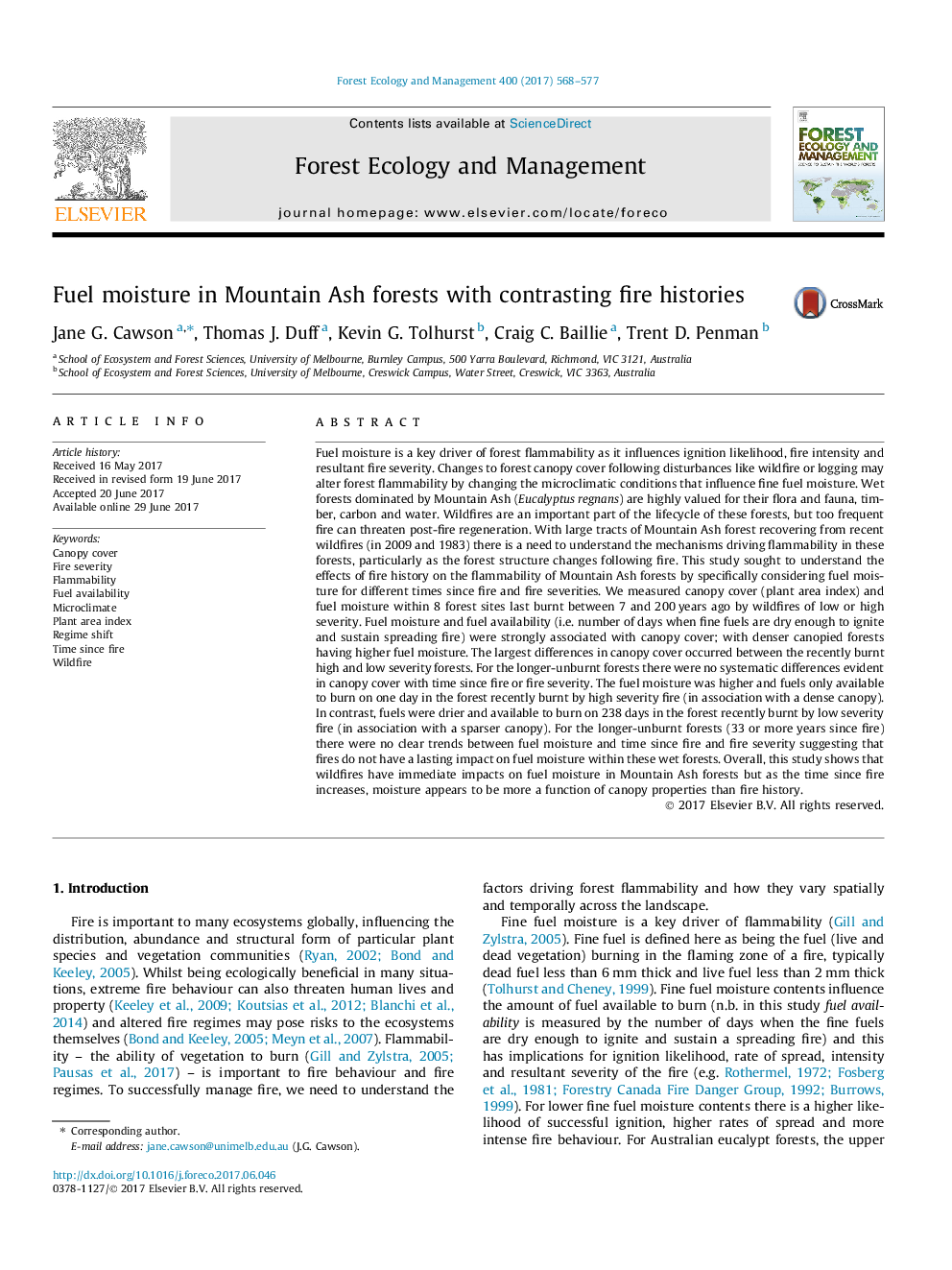| کد مقاله | کد نشریه | سال انتشار | مقاله انگلیسی | نسخه تمام متن |
|---|---|---|---|---|
| 6459301 | 1421358 | 2017 | 10 صفحه PDF | دانلود رایگان |
- Fuel moisture was strongly associated with canopy cover but not time since fire.
- Fuels were wetter in forests recently burnt by high severity fire.
- Fuels were drier in forests recently burnt by low severity fire.
- Wildfire did not have a long-term impact on fuel moisture.
Fuel moisture is a key driver of forest flammability as it influences ignition likelihood, fire intensity and resultant fire severity. Changes to forest canopy cover following disturbances like wildfire or logging may alter forest flammability by changing the microclimatic conditions that influence fine fuel moisture. Wet forests dominated by Mountain Ash (Eucalyptus regnans) are highly valued for their flora and fauna, timber, carbon and water. Wildfires are an important part of the lifecycle of these forests, but too frequent fire can threaten post-fire regeneration. With large tracts of Mountain Ash forest recovering from recent wildfires (in 2009 and 1983) there is a need to understand the mechanisms driving flammability in these forests, particularly as the forest structure changes following fire. This study sought to understand the effects of fire history on the flammability of Mountain Ash forests by specifically considering fuel moisture for different times since fire and fire severities. We measured canopy cover (plant area index) and fuel moisture within 8 forest sites last burnt between 7 and 200Â years ago by wildfires of low or high severity. Fuel moisture and fuel availability (i.e. number of days when fine fuels are dry enough to ignite and sustain spreading fire) were strongly associated with canopy cover; with denser canopied forests having higher fuel moisture. The largest differences in canopy cover occurred between the recently burnt high and low severity forests. For the longer-unburnt forests there were no systematic differences evident in canopy cover with time since fire or fire severity. The fuel moisture was higher and fuels only available to burn on one day in the forest recently burnt by high severity fire (in association with a dense canopy). In contrast, fuels were drier and available to burn on 238Â days in the forest recently burnt by low severity fire (in association with a sparser canopy). For the longer-unburnt forests (33 or more years since fire) there were no clear trends between fuel moisture and time since fire and fire severity suggesting that fires do not have a lasting impact on fuel moisture within these wet forests. Overall, this study shows that wildfires have immediate impacts on fuel moisture in Mountain Ash forests but as the time since fire increases, moisture appears to be more a function of canopy properties than fire history.
Journal: Forest Ecology and Management - Volume 400, 15 September 2017, Pages 568-577
